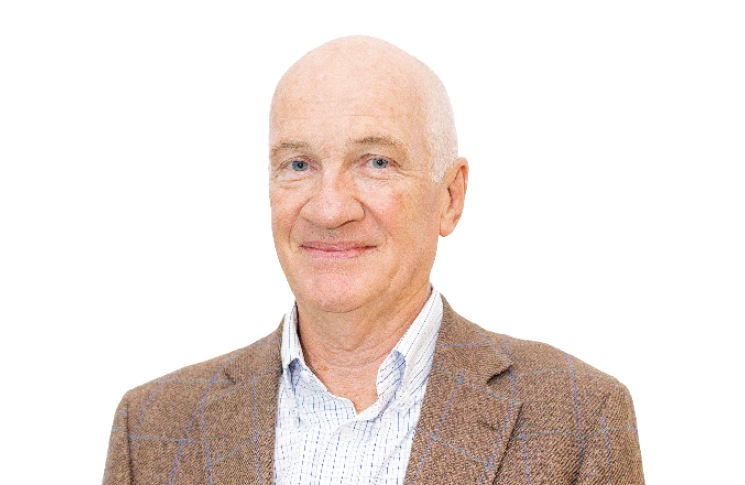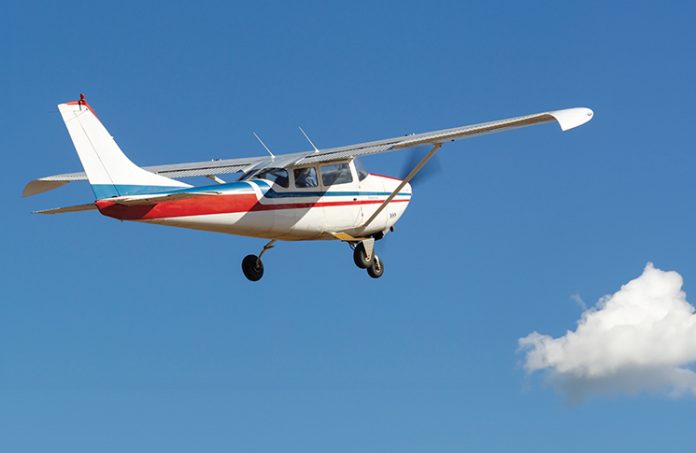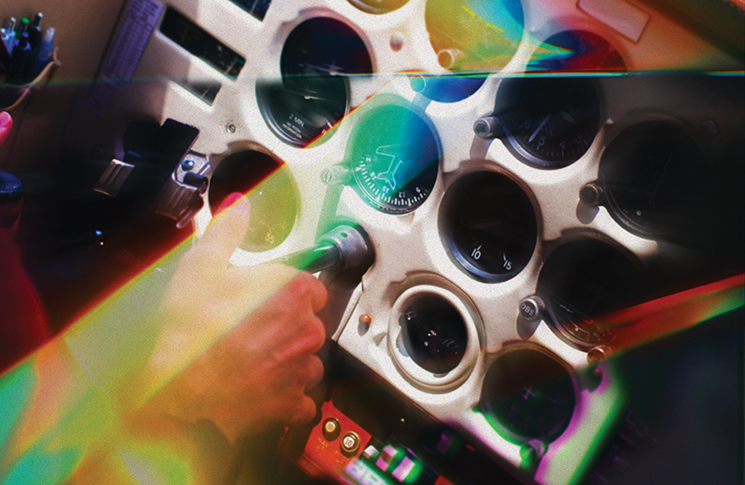Urbane is the ideal word to describe Julian Fraser. But it’s also an ironic term, considering his background.
The son of a station manager, he was born in Finley in south-west NSW and grew up on vast properties, including a 300,000-ha sheep station in South Australia. Despite his heartfelt fondness for rural life, Fraser is as far from the archetypal taciturn bushman as can be imagined: if gregariousness was a sport, he could compete for Australia.
Over the course of his 40-year career in the not conspicuously sociable field of insurance, he has done general aviation a great service, and indirectly saved an unknown but probably large number of lives by putting his considerable interpersonal skills – and a sharp analytical mind – to the service of aviation safety.
His latest role as chief executive of the Australian Helicopter Industry Association (AHIA) continues the pattern of his unexpected career, using his combination of charm, analytical insight and commitment to make things safer.

Q. How did you get involved in aviation?
As a child I remember the old guys in their de Havilland Beavers with shirts and ties under their overalls – they were sowing rice. But I didn’t have an overwhelming interest in aviation as a boy, even though my uncle from Thargomindah would come to visit us in his Cessna 182.
I studied agricultural economics at Armidale and came to Melbourne in 1982, into a drought and a recession. A chance conversation with a friend of my Dad’s was interrupted by a phone call. ‘That guy’s got a great job, he insures aeroplanes,’ the friend said. ‘Why don’t I introduce you?’ So I went to lunch and got the job and became a trainee underwriter with the Australian Aviation Underwriting Pool.
Having come off the land, I related to the way of life of general aviation, particularly country people and family businesses. Insurance suited me; at boarding school and uni, I had a large network of friends and I just added to them.
I rapidly built a strong rapport with our customer base, but over many discussions with them, it became clear to me GA was not very proactive about safety. It was personal because in our business we knew everybody – we knew all our customers. Of our 5,000 or so policyholders, we had spoken to every one.
So quite early on I adopted a collaborative safety approach with operators and stakeholders to try to make a difference to avoidable accidents and needless loss of lives and to allow customers to control their premiums. We used to go to every dogfight in town, aviation events with the likes of Mac Job – the Rapide he used to fly was on the front page of our policy document.
Q. What motivated your interest in safety?
Accidents, too many of them. I felt a duty to do whatever I could to ease the pain. I had too many meetings with widows, whose husbands had died, often doing something avoidable. I became tired of the needlessness of it all. At least 80 per cent of accidents were down to human factors.
It was also that people would complain about their premiums. I’d say, ‘Mate, look at the statistics’ and that encouraged me to start the safety journey. It was always very collaborative. My boss Ray Cronin at the AHIA was significant in starting the journey in helicopters. The MacKay family at Fieldair were friends and supporters, as were John McKnight and the Commanche Society. So something as potentially dour as aviation insurance became very sustaining. And along the way, I learnt how to fly. I got my licence in 1990.
I had too many meetings with widows, whose husbands had died, often doing something dumb.
Q. What insights into aviation safety did you gain from your background in insurance?
In the early 90s at my office at Essendon Airport, we formed the Aviation Safety Foundation Australasia, ASFA, which became the Australian office of the US Flight Safety Foundation. Its aim was to accredit operators who were managing safety well with the aim of them being able to create a commercial advantage and, ultimately, for other operators to aspire to the same standards because of this benefit.
I was fortunate to be exposed to thinkers like Mac Job, Tony Kern, Wayne Handley and Matt Hall who directly influenced my focus on human factors, airmanship, aerodynamics, proficiency, managing risk and critical controls.
I was particularly fortunate over the last decade to serve on the board and as chair of the Flight Safety Foundation’s basic aviation risk standard (BARS) program office in Melbourne until very recently, where I had access to global safety leaders and gained a much broader perspective, knowledge and network.
Q. What did you do in underwriting to make the industry safer?
We actively collaborated with industry groups to initiate, support and develop proficiency and safety courses. These included breed groups/type clubs like Comanche and Bonanza Beech Society, Mooney, Cessna and Piper Pilots Associations. Generally we rebated participants in these courses the cost of attending and scaled premiums to make it attractive financially to undertake and maintain proficiency standards: often the granting of insurance cover was conditional on attendance and maintaining proficiency.
There were also schemes like that of the Sport Aircraft Association of Australia for homebuilt aircraft where cover was conditional upon the completion of independent construction and testing checks being performed.
In collaboration with these groups and industry, we regularly identified accident trends and recurring issues arising in our claims files so that material was used in the establishment of these safety courses and initiatives.
BARS has had a profound impact for organisations’ management of their aviation risk.
We sponsored local and international safety presenters and speakers to attend industry conferences and workshops in Australia and New Zealand. Given Matt Hall’s popularity, as part of our corporate sponsorship he made numerous presentations all over the nation on our behalf on building awareness about airmanship over the last decade.
On occasions where we were concerned with whether a pilot was sufficiently experienced for a particular type, we would stipulate the candidate undertake independent check flights or subscribe to a transitional flight program with oversight from an acceptable mentor. On rare occasions we even had some crew undertake aptitude tests to observe their behaviour under load.
We tried to foster aviation: rather than say ‘no’ to a risk, our broad philosophy was to try to improve risk where we could in the interests of us underwriting profitably while containing customers’ premiums and encouraging a sustainable and safe GA industry.
Q. What is BARS and how did it contribute to safety?
The basic aviation risk standard program was developed by the Flight Safety Foundation in Melbourne in 2009 and has become a great Australian global success story. BARS was conceived to create an independent non-proprietary standard for contracted aviation services globally.
The backing members were generally resources companies, sometimes conducting exploration and mining operations in some of the most challenging geographies and regulatory regions on the planet. By ensuring operators flying their personnel complied with the BARS standard, these corporations could feel comfortable their people could travel safely in local and remote locations.
Importantly for operators, their audits and status are instantly available to all subscribing member companies, avoiding the traditional burden of multiple audits to varying standards.
The program has grown consistently over the last 14 years in membership, reputation, number of operators and number of audits, while enhancing safety in a range of sectors. During this time BARS has been continually enhanced and the scope of standards extended, including to incorporate offshore and uncrewed operations as well as providing important safety assurance for international aid agencies. ICAO lists BARS as one of 3 recognised independent international standards and it was awarded a Victorian Governor’s Export Award in 2017.
BARS has had a profound impact for organisations’ management of their aviation risk and for the safety of personnel travelling in contracted aviation globally.
Q. What is distinctive about the helicopter industry in Australia?
We have a uniquely diverse range of helicopter operations. There are more than a dozen specialised operational areas, each with its own particular challenges. They make an impressive list:
training, with the subgroup of international training aerial mustering, culling and general station work exploration geophysical survey filming and photography scenic flights and charter search and rescue emergency medical service offshore transport and marine pilot transfers natural heritage surveillance aerial crane and slinging aerial work, including firefighting and controlled-burn ignition flood relief and humanitarian aid law enforcement private operations, recreation and business support Antarctic scientific research support and rescue. Looking at that list, it is no wonder that Australia has the second largest civilian helicopter fleet in the world – and the industry is still growing.
Q. What are the industry’s strengths?
First, we have a big, uncrowded country, with relatively benign weather and terrain, which offers huge scope for flying. Second, the industry has made itself essential.
We have major industries in resources and primary production that depend significantly on aviation support from rotary-wing operators. And the entire country depends on our industry to protect lives, property and livestock in the face of natural disasters like bushfires and floods. That has happened because of industry leaders with passion and experience who have advanced the industry’s interests through significant personal sacrifice.
Our industry has an effective and respected voice through AHIA to CASA, ATSB and other agencies, and globally through the Helicopter Association International (HAI) international partners program.
Q. What threats does the industry face?
There’s no question, our safety record needs to improve. Although many of our sub-sectors have excellent safety records, others do not. But the perception created by less safe operators, including private operators, affects the entire industry.
A helicopter has the unique ability to land almost anywhere if the pilot detects a problem – land and live. It’s an advantage that all operators should take full advantage of.
Engineering staff and resources is another issue. We need to maintain a sufficient supply through apprentice and skills training and remove obstacles to recruiting offshore experience. There are potential environmental pressures compounded, because this is aviation, by a lag time for green solutions.
Q. Without commenting on the investigation, what can you say about the effect the 2 January Sea World crash has had on the industry?
Arguably, it’s generated the most media attention on an aviation accident in this country, which really allowed the public to form an adverse view of the industry on the back of a number of other high-profile accidents in recent years.
The industry can’t afford another Sea World – we simply must improve safety. ‘The future of us all depends on each of us’ – that summarises our challenge. As an industry we have to be professional and educate the public to accept that we are safe.
Q. What are your thoughts on drones and advanced air mobility and the helicopter industry? Is it a threat or opportunity?
It all depends on when … and I confess to some cynicism about the proximity – it’s been 5 years away for at least 10 years. In my former working life, I’ve been invested in the development of UAS/AAM for the past 15 years and so had been encouraging customers to consider getting on board or risk missing the boat at some point. But many operators are showing interest and some of our unique operations will become autonomous in the next decade. Australia has an advantage in being an emerging force in this arena.
The industry can’t afford another Sea World – we simply must improve safety.






Great article to highlight the benefits significant individuals can make to our aviation industry. Julian has the attributes to assess and communicate the commercial realities of high accident rates, risk ratios in a very passionate and practical sense. Julian has a broad church and can reach out on a very personal level to make a difference without blame rather prevention of repetition of the same accident trends.
Julain should be applauded for his contribution to aviation safety initiatives and his passion to foster a safer
outcome for all participants.